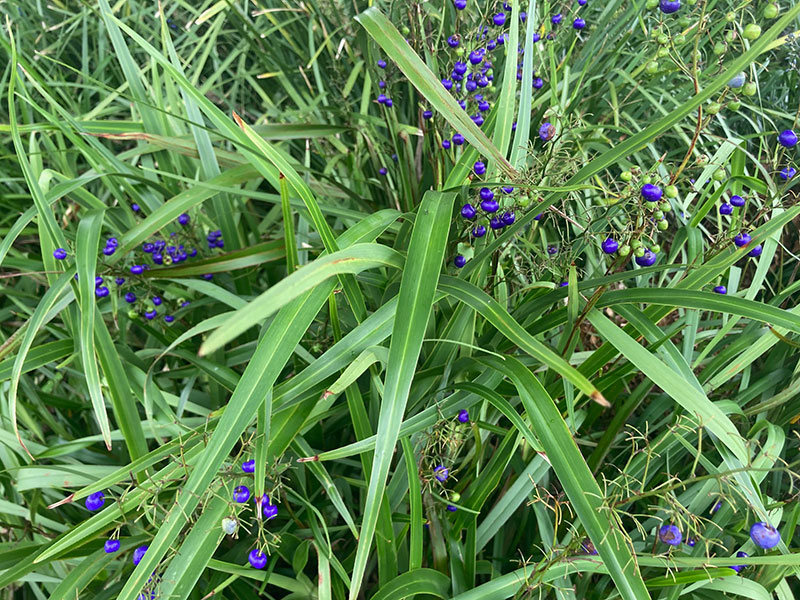Blue Flax Lily
Blue Flax Lily (Dianella caerulea, Dianella revoluta)
Family: Asphodelaceae
Size: To 1.5m
Description: Tufted understory clumping rushes with grass like strap leaves with sprays of globular blue purple berries, often forming dense mats. 15 species of flax Lily are found in Australia.
Habitat: Flax lilies are found in dry woodlands, moist open forests, rainforests and coastal dunes along the east coast.
Foliage: Alternate, dark green stem, strap like leaves (70cm x 20mm) with thick mid vein. Strong and fibrous with sheathed bases. Rhizomes: Brown to 6mm
Flowers: Small purple/blue flowers with six petals and a yellow black centre. Flowering from spring through summer
Fruits/seeds: Globular blue-purple fruit to 15mm with spongy pulp containing several small black seeds. Fruits held in open sprays on top of tall upright stems. Edible species are: D. caerulea, D. revoluta, D. amoena, D. pavopennacea, D bambusifolia.
Distribution: Widespread in all Australian states.
Uses: Purple fruits of many (not all) Dianella species are edible and have a sweet and slightly nutty flavour (don’t eat too many), others have a horrible burning taste (D. tasmanica) and are not edible and should not be eaten. White leaf bases of some Dianella species are edible raw or cooked (D. revoluta). Juice from the fruit used as a dye (dark blue) and traditionally rubbed into sea ulcers. Fibrous leaves used for weaving dillies and baskets and can be split in two and twisted to make a strong string or rope. Rhizomes traditionally eaten after roasting and pounding.



